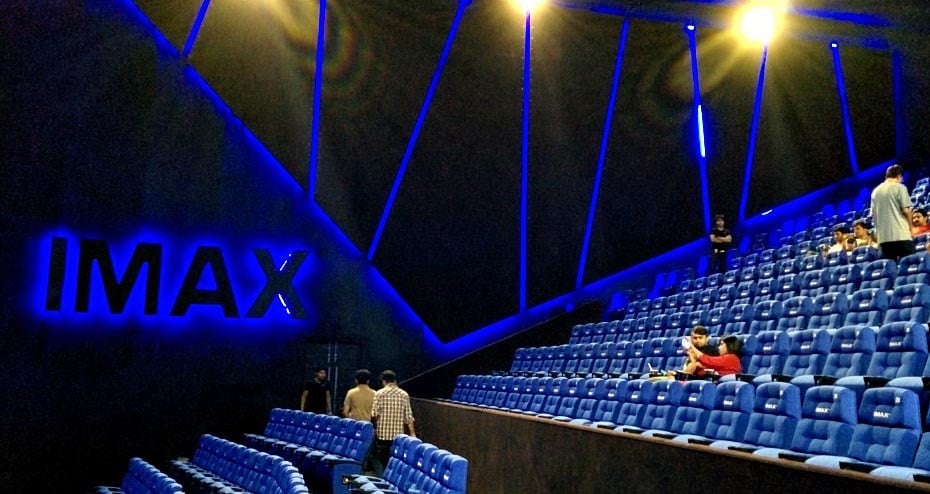
Cinemagoers can be broken down into different segments based on the type of cinema hall

The Pakistani film industry is visibly on the rise. There are more films in production than have been released in the last five years; there are more screens in the city of Lahore than there used to be in the entire country. Spending an evening at the movies, or an afternoon to find refuge during the hot month, is a rising trend among urbanites. In some families it has grown to ritualistic proportions.
Based on discussions with people involved in film distribution and cinema exhibition, I gather that cinemagoers can be broken down into different segments based on the type of cinema hall. Screens are divided into two basic categories -- multiplexes and single screen auditoriums. Both attract very different people, and, therefore, lay emphasis on different kinds of films.
Multiplexes, whose numbers have steadily grown in the last couple of years, attract mostly 16-24 year olds. With multiple screens they have the ability to show different movies concurrently. Because there are several movies playing at once, one sees young couples, groups of boys and girls, as well as families, usually all there to watch a different movie. The reception area, therefore, often makes for an interesting array of individuals.
The air-conditioned environment provides the much-needed relief from the heat, and the multiplicity and variety of eating options means the experience is not limited to what is on the screen. Since these are mostly found in upscale locales, or within high-end malls means the audiences reflect the growing middle classes of Pakistan. Lower-end consumers are often priced out both at the ticket booth as well as the concessions stand. Where do they go?
At single screen auditoriums, such as those off The Mall in the British remnants of Lahore, the concession stands are sparse, but the tickets are also cheaper. These large, often imposing halls, attract lower-end consumers, something that is reflected in the entire experience as well. There are fans instead of air-conditioners, packets of crisps instead of nachos, and most-interestingly even the movies are somewhat different.
Hollywood films, no matter how successful abroad or in multiplexes, seldom make the listings here. In lower-scale localities, it is Bollywood films that run the roost. The Pakistani films that have turned a profit, too, owe a great deal of their success to successful runs in single screen auditoriums, which currently form the majority of cinemas in Pakistan.
But a night out at the cinema is not the only means of watching movies. I met up with Irteza Javed, a biotech graduate, an occasional contributor to film blogs, and an avid movie watcher. "I prefer to watch movies at home and online. At the cinema, your options are limited to five or six motion pictures. I say why limit yourself to that when you have an entire world of movies at your fingertips."
Online streaming portals, such as Pop-corn Time allow him to peruse through movies by genre and watch them in high definition. "As a serious movie watcher and film enthusiast I also prefer silence, so I would much rather use my laptop, the cinema hall can be distracting at times."
When asked about these distractions he was amusingly evasive. "Going to the cinema requires effort -- it’s an administrative hassle to get your friends involved, then getting tickets, etc. Why waste that time and effort when you can have a more enjoyable experience without so much as leaving your room."
The growing group of avid or perhaps lazy movie watchers, that Irteza forms a part of, can be seen as an untapped market in Pakistan. Most recently, the influx of Netflix in Pakistan has appealed to many like him. One can only guess where that will take the cinema landscape of Pakistan. We already see a few Pakistani films embracing the online portal.
But any inquiry into movies and movie-watchers must end at the DVD store. When the internet speed is slow, or the selection of movies playing at the cinema is not to your liking, you invariably walk into these often-tiny rooms with libraries worth of films, TV shows, and music CDs. They may be compromised on quality but they will have all the latest films, and they make up for it by burning movies for extremely cheap. The DVD store picks up the pieces and caters to those that are either priced out, disinterested or have yet to fully embrace the digital age.
A positive for those in the film industry, either in production or distribution, is the fact that Pakistanis love watching movies. Whether it be through cinema halls, or in their bedrooms, they will find a way to do so. The task for a successful provider would be to always stay one step ahead of the consumer.